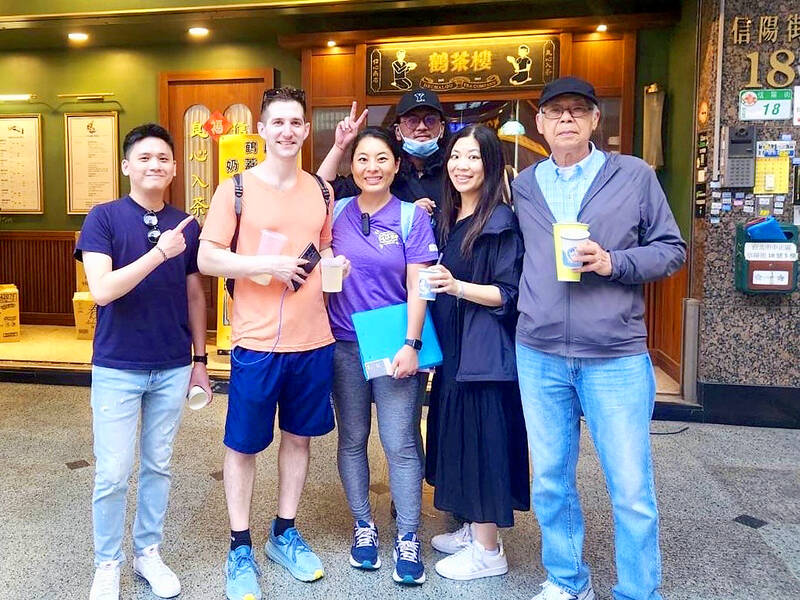
Photo: Bonnie White
Eric Finkelstein is a world record junkie. The American’s Guinness World Records include the largest flag mosaic made from table tennis balls, the longest table tennis serve and eating at the most Michelin-starred restaurants in 24 hours in New York.
Many would probably share the opinion of Finkelstein’s sister when talking about his records: “You’re a lunatic.”
But that’s not stopping him from his next big feat, and this time he is teaming up with his wife, Taiwanese native Jackie Cheng (鄭佳祺): visit and purchase a drink from as many tea shops in 12 hours. And they chose Taipei to do it.
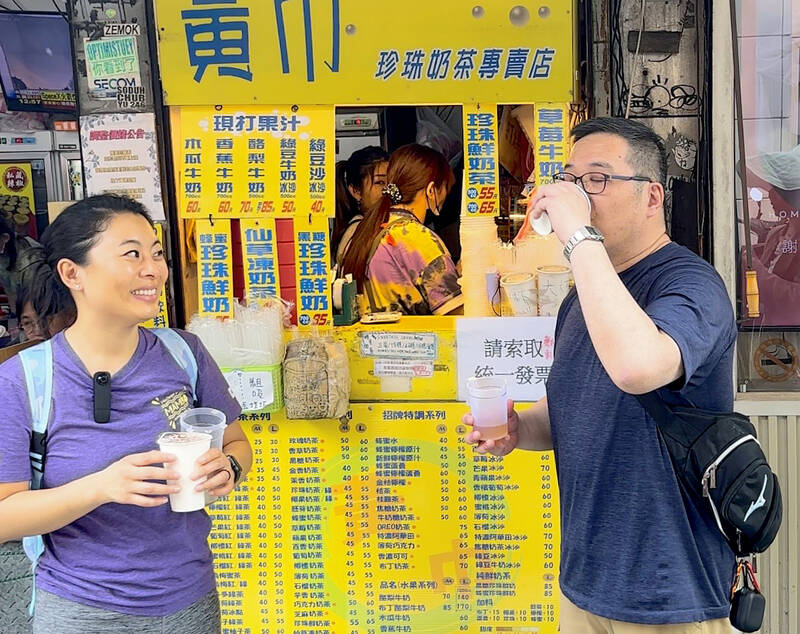
Photo: Bonnie White
Cheng thought up the challenge, which blends their love for bubble milk tea with a trip to its birthplace.
THE CHALLENGE
Organizing the challenge was the result of two years of planning with the folks at Guinness World Records.
The company’s requirements are strict. A drink has to be purchased from each tea shop, a minimum of 250ml has to be consumed, participants must be on foot or use public transport and a signature from a shop attendant must be registered.
On March 26, they started in Taipei’s Xinyi District (信義), equipped with active wear, enough cash to purchase at least 50 drinks and their trusty measuring cups.
At 10am, Cheng downs a herbal jelly tea, her first drink of the day, in under a minute.
Soon, their first hiccup: many of the tea shops on their itinerary are closed, a possible game-changer for their tight schedule. Cheng quickly scouts out a number of alternatives, and they continue with only a minor amount of lost time.
The challenge heats up at noon when the streets fill up with office workers lining up to order beverages. More anxiety about time. But Cheng has a solution: place orders with tea shops in advance. More minutes saved.
The day has become “a lot of extra work on my part,” she says, because Finkelstein speaks only a little Mandarin.
WITNESSES
An important role is that of the witness. Neither friend nor relative, the witness works a four-hour shift monitoring the couple throughout the day as they imbibe as much tea as possible, in exchange for a free beverage.
Finkelstein says their nervousness over their initial lack of responses disappears when fourteen “drinking helpers” eventually volunteer. But there is one condition: to stay on schedule, they have to drink it in three minutes.
As time goes on, the volunteers develop a camaraderie, sharing beverages, toasting each other before chugging them down as though college students tackling an all-you-can-drink game.
“I haven’t had that much fun in a long time,” says witness Jordan, a Scottish cram school teacher.
WORLD RECORD
At 8pm, the group of boba enthusiasts arrive at their final destination, Ximending.
Finkelstein is his chipper and energetic self, and wants to continue. But Cheng has become visibly withdrawn — understandable, perhaps, considering she has just completed 18,000 steps, downed over five liters of liquid and spent the entire day dealing with baristas and navigating Taipei’s busy streets.
“It had to be a hundred times worse for Jackie because she had to do so much more” Finkelstein says.
So a decision has to be made: continue until their self-imposed time of 10pm, or stop. As the challenge only required the couple to visit a minimum of 25 tea shops — and they were nearing their sixtieth shop — the answer is obvious.
Finkelstein and Cheng say their love for bubble tea remains strong, even after forcing so much of it down their throats.
“I don’t know that we could have done it by the end of the day without everyone’s help,” Cheng says.
The record in the bag, now they only have to wait three months for Guinness World Records to validate their feat.
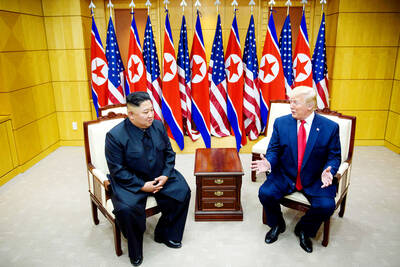
US President Donald Trump may have hoped for an impromptu talk with his old friend Kim Jong-un during a recent trip to Asia, but analysts say the increasingly emboldened North Korean despot had few good reasons to join the photo-op. Trump sent repeated overtures to Kim during his barnstorming tour of Asia, saying he was “100 percent” open to a meeting and even bucking decades of US policy by conceding that North Korea was “sort of a nuclear power.” But Pyongyang kept mum on the invitation, instead firing off missiles and sending its foreign minister to Russia and Belarus, with whom it
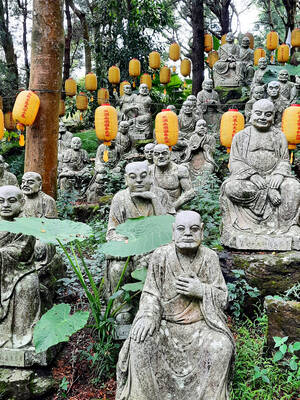
When Taiwan was battered by storms this summer, the only crumb of comfort I could take was knowing that some advice I’d drafted several weeks earlier had been correct. Regarding the Southern Cross-Island Highway (南橫公路), a spectacular high-elevation route connecting Taiwan’s southwest with the country’s southeast, I’d written: “The precarious existence of this road cannot be overstated; those hoping to drive or ride all the way across should have a backup plan.” As this article was going to press, the middle section of the highway, between Meishankou (梅山口) in Kaohsiung and Siangyang (向陽) in Taitung County, was still closed to outsiders
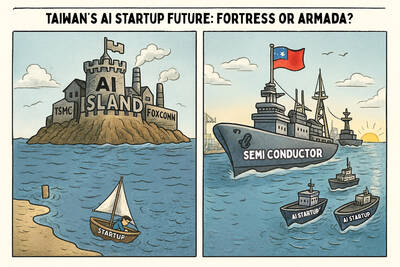
President William Lai (賴清德) has championed Taiwan as an “AI Island” — an artificial intelligence (AI) hub powering the global tech economy. But without major shifts in talent, funding and strategic direction, this vision risks becoming a static fortress: indispensable, yet immobile and vulnerable. It’s time to reframe Taiwan’s ambition. Time to move from a resource-rich AI island to an AI Armada. Why change metaphors? Because choosing the right metaphor shapes both understanding and strategy. The “AI Island” frames our national ambition as a static fortress that, while valuable, is still vulnerable and reactive. Shifting our metaphor to an “AI Armada”
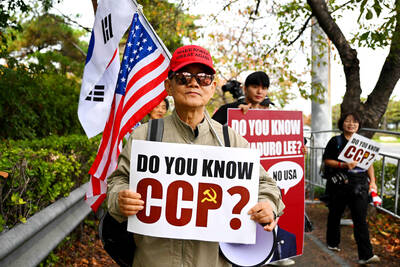
The Chinese Communist Party (CCP) has a dystopian, radical and dangerous conception of itself. Few are aware of this very fundamental difference between how they view power and how the rest of the world does. Even those of us who have lived in China sometimes fall back into the trap of viewing it through the lens of the power relationships common throughout the rest of the world, instead of understanding the CCP as it conceives of itself. Broadly speaking, the concepts of the people, race, culture, civilization, nation, government and religion are separate, though often overlapping and intertwined. A government